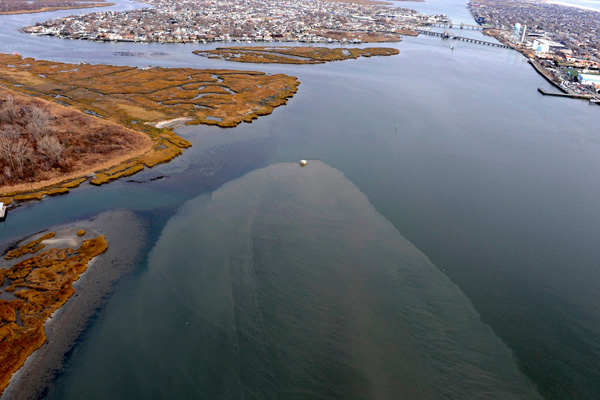Hurricane Sandy was the deadliest and most destructive hurricane of the 2012 Atlantic hurricane season, as well as the second-costliest hurricane in United States history. The following is a Press Release by Climate Central dated April 30, 2013 and titled “Sandy Caused 11 Billion Gallons of Sewage Overflows to Waterways: Climate Change, Rising Seas, and More Intense Rains Increasing Odds of Sewage Overflows”:
Six months after Hurricane Sandy left parts of the East Coast leveled and underwater, a new Climate Central report details another layer of destruction: 11 billion gallons of partially or untreated sewage leaked into rivers, lakes, and waterways in the aftermath of the storm.
Along with the report, Climate Central launched an embeddable online interactive that tracks the overflow totals by state, type, and cause. The analysis, based on data reported to state agencies by municipalities, found:
- The amount of sewage overflow during Sandy, 11 billion gallons, is equivalent to the entire area of Central Park — 843 acres/1.4 square miles — stacked 41 feet high with sewage or more than 50 times the BP oil spill.
- 94 percent of the spilled sewage was from storm surge, where despite the heroic efforts of plant operators, Sandy’s floodwater simply overwhelmed the plant, leading to major diversions of sewage into receiving waters.
- 32 percent of the overflow was untreated sewage.
- 93 percent of the volume of sewage overflows took place in New York and New Jersey.
- Eighteen of the 20 largest spills ended up in these two states, as did the four individual sewage overflows of more than 1 billion gallons each — two from New York and two from New Jersey.
- In Washington D.C., 5.1 inches of rain from Sandy produced the 6th largest Sandy-related overflow — 475 million gallons of untreated sewage and contaminated runoff.
“Sandy showed the extreme vulnerability of the region’s sewage treatment plants to rising seas and intense coastal storms,” said Alyson Kenward, lead author of the report. Most experts expect seas to rise between 2 to 4 feet by the end of the century, even if aggressive actions are taken to control emissions of greenhouse gases.
New York and New Jersey officials estimate the cost of repairing damaged sewage infrastructure at about $3 billion. Many more billions will be needed to fortify and modify treatment plants to withstand the impact of future storms.
Headquartered in Princeton, N.J., Climate Central is a non-profit research and journalism organization providing authoritative, science-based information to help the public and policymakers make sound decisions about climate and energy.

.jpg)

